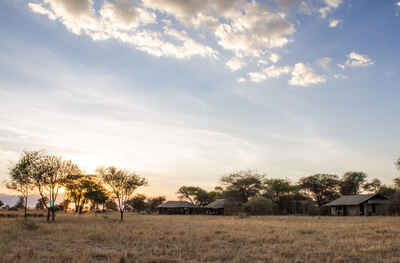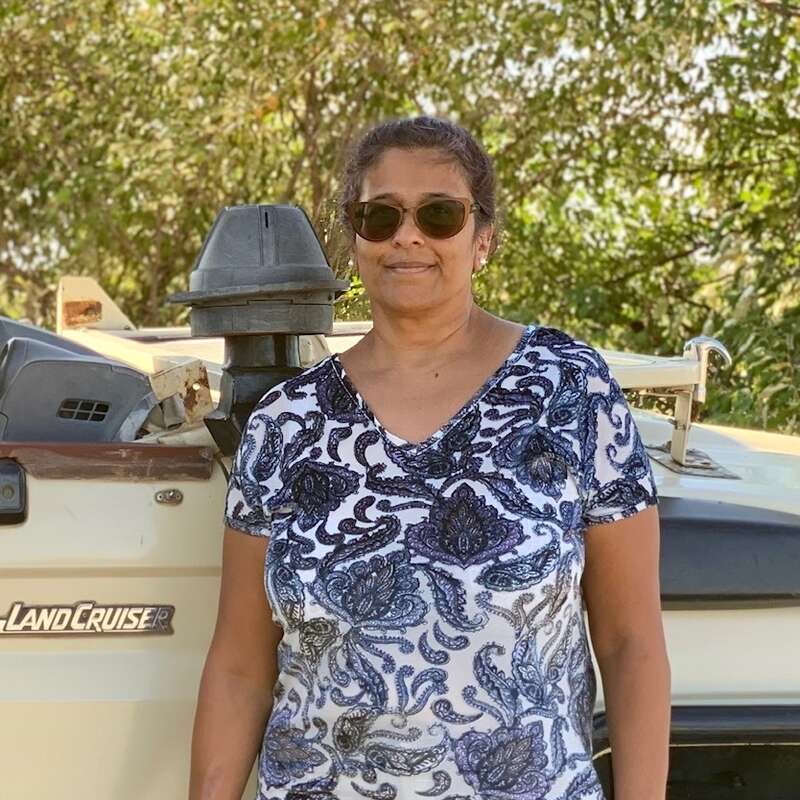About Little Chem Chem
Little Chem Chem is situated in the eastern part of the 200 km² Chem Chem Concession which has protected ...
... an important wildlife corridor adjoining Tanzania's Tarangire National Park. The area is dotted with baobab trees and overlooks Lake Burunge. Guests can experience a variety of safari activities here, including game drives, walking and night drives.
Little Chem Chem is a good option for those seeking a relaxing safari, perhaps at the beginning or end of a trip. The high levels of luxury and excellent service make for a wonderfully pampered stay, with the bonus of some good wildlife experiences.
Accommodation
6 tents
Children
Best for 12+
Open
June to March
Activities

4WD Safari

Birdwatching

Cultural excursion

Guided walking safari

Hot air ballooning

Night drive

Private activities
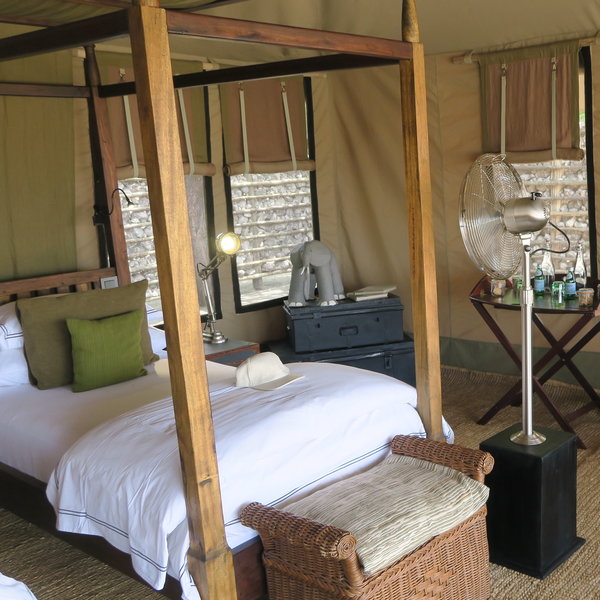
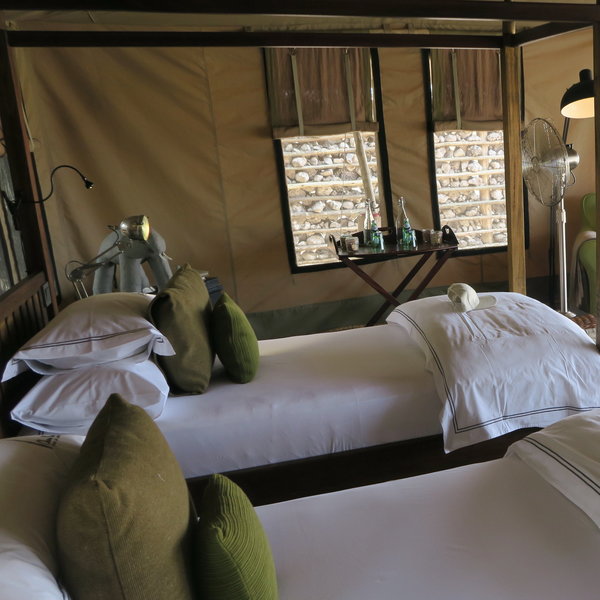
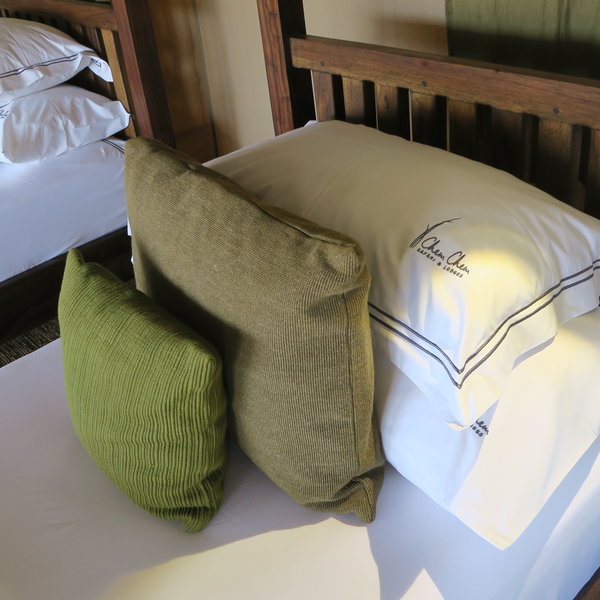
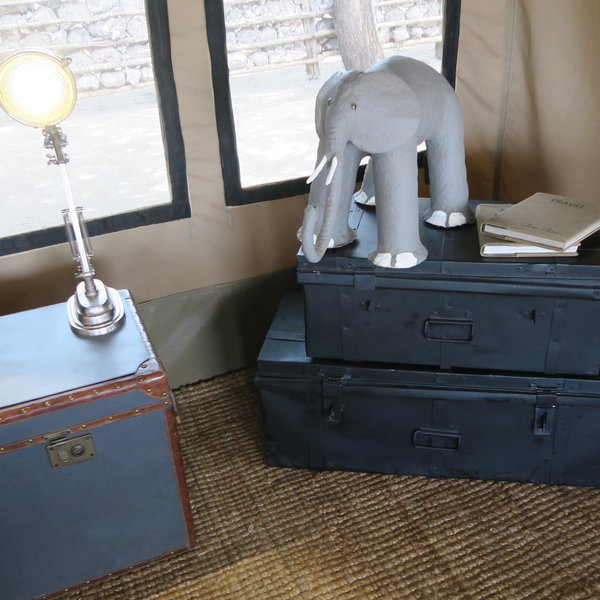
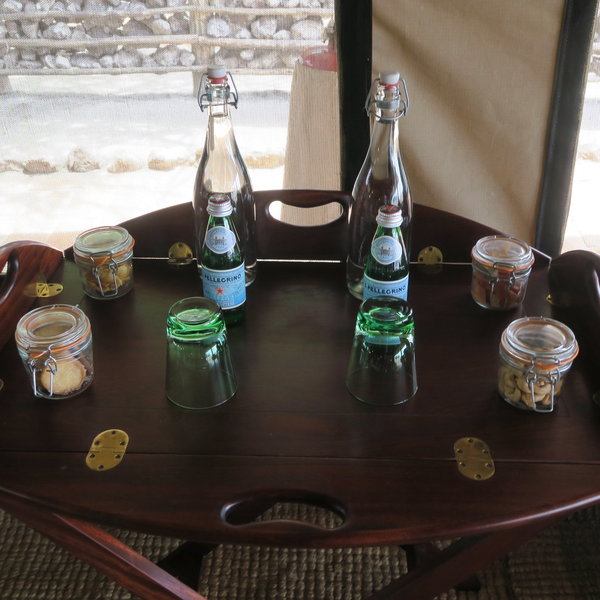

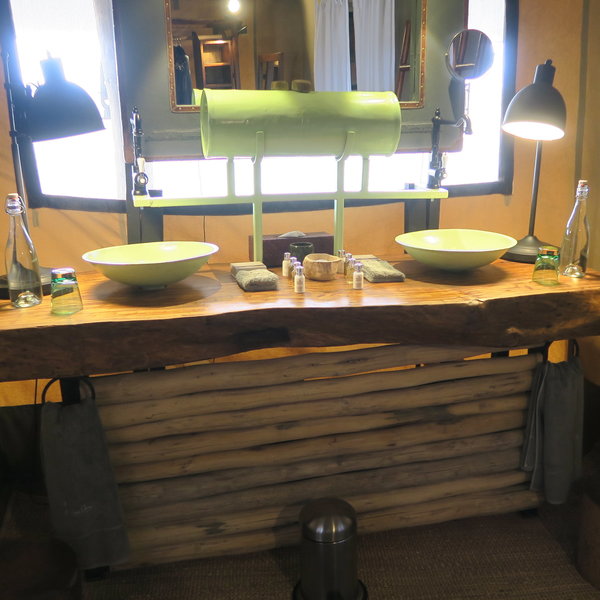
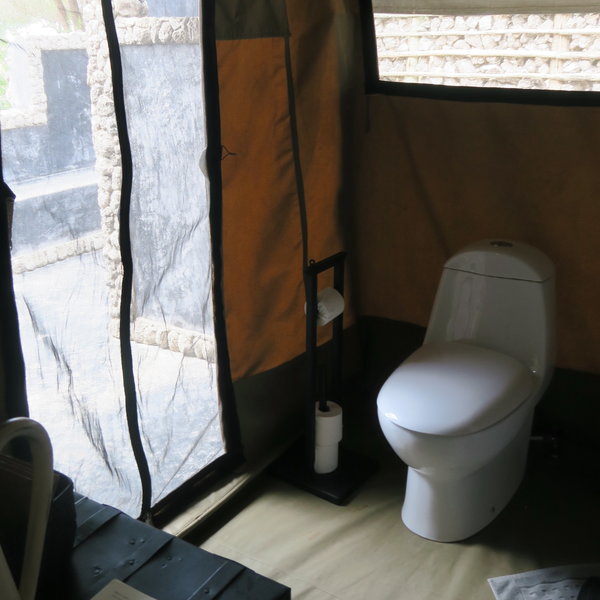
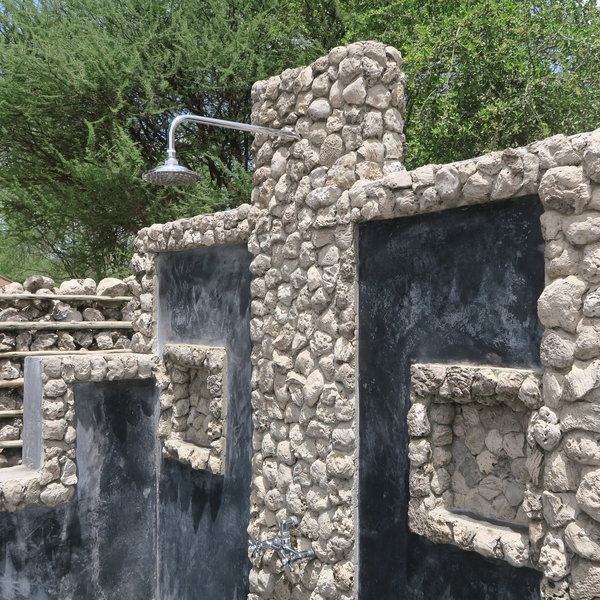
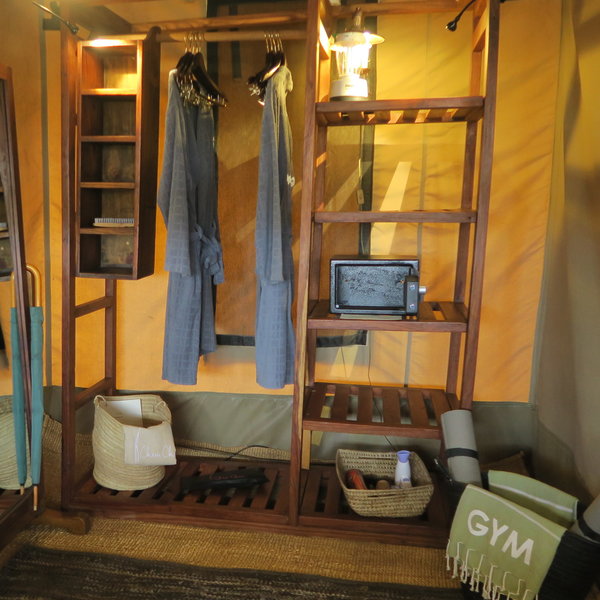
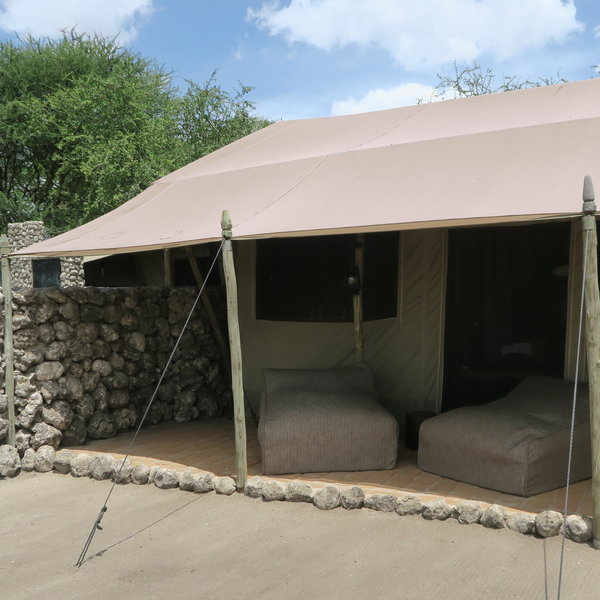
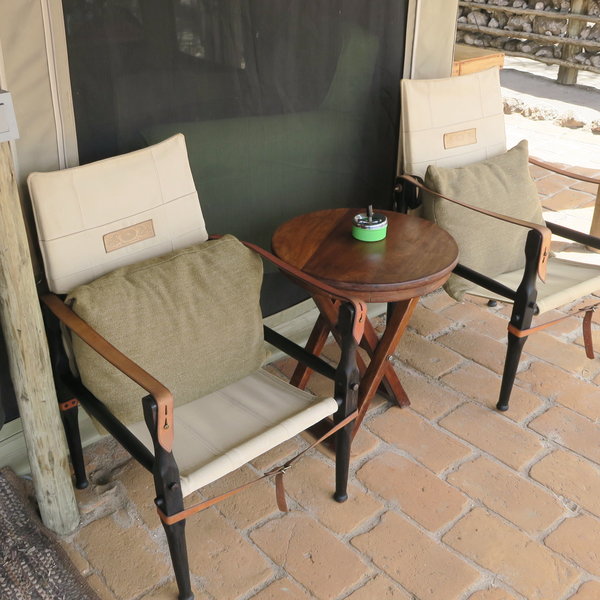
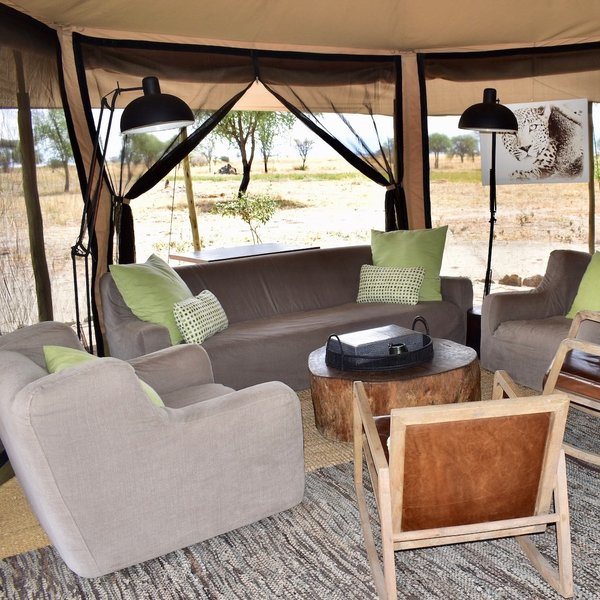
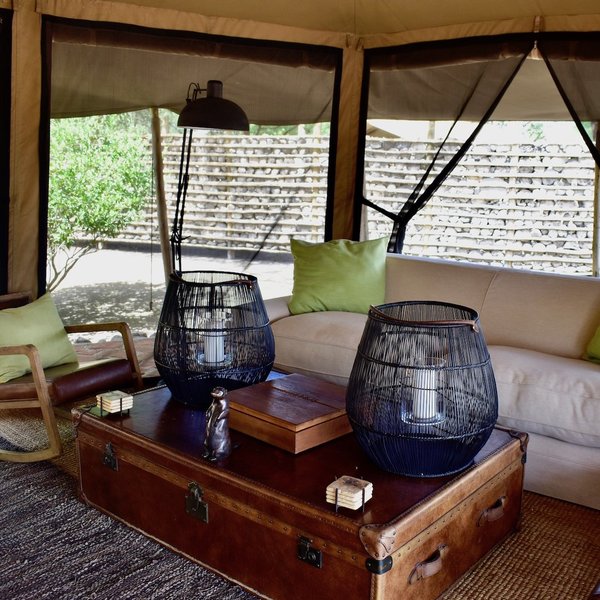
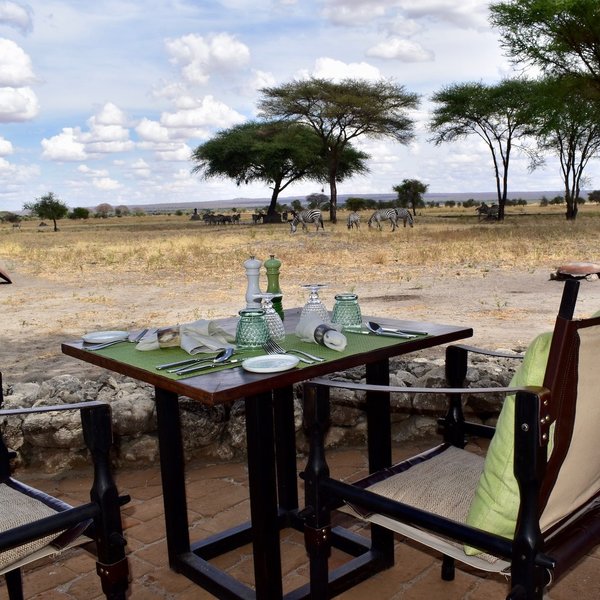
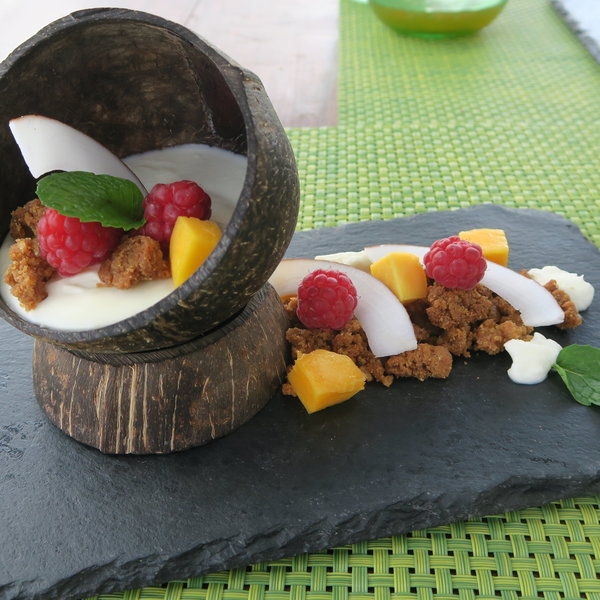
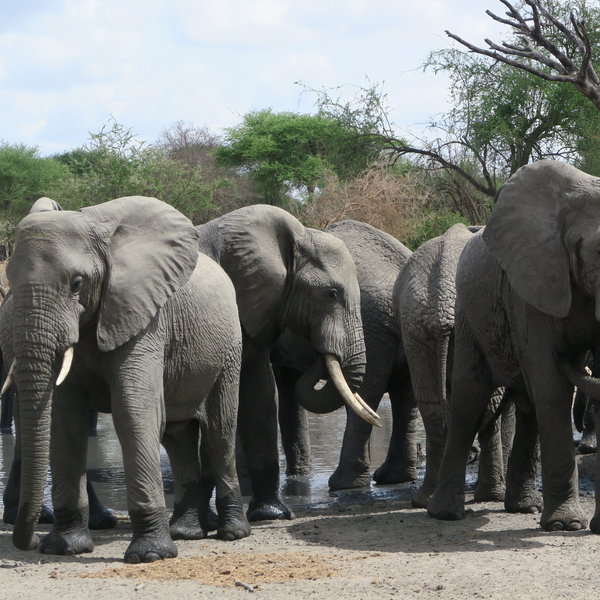

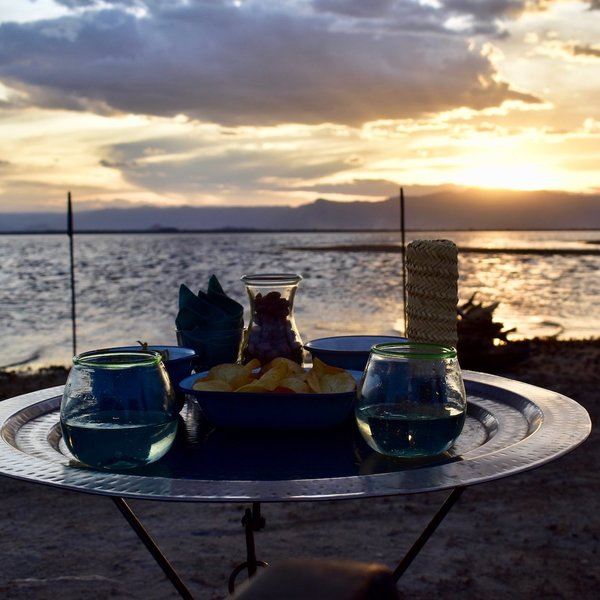
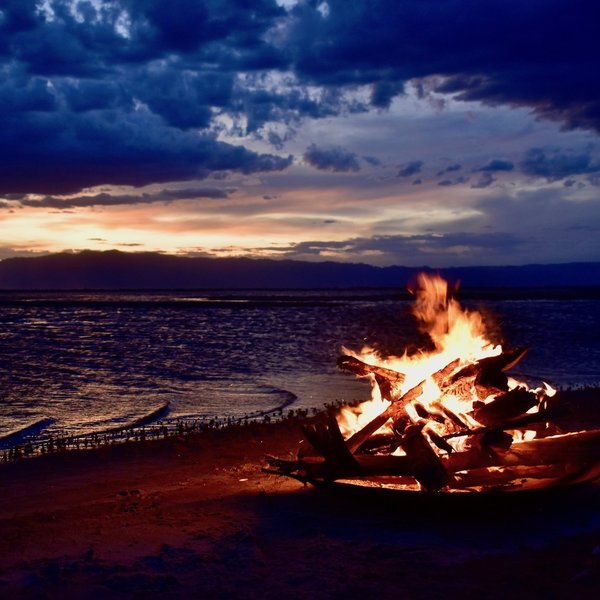
Expert Africa's gallery
When we travel we take lots of photos ourselves to give you a real and un-edited view of the safaris. See our 22 pictures of Little Chem Chem to get the candid view.
View gallerySafaris visiting Little Chem Chem
Just ideas, we'll always tailor-make a trip for you
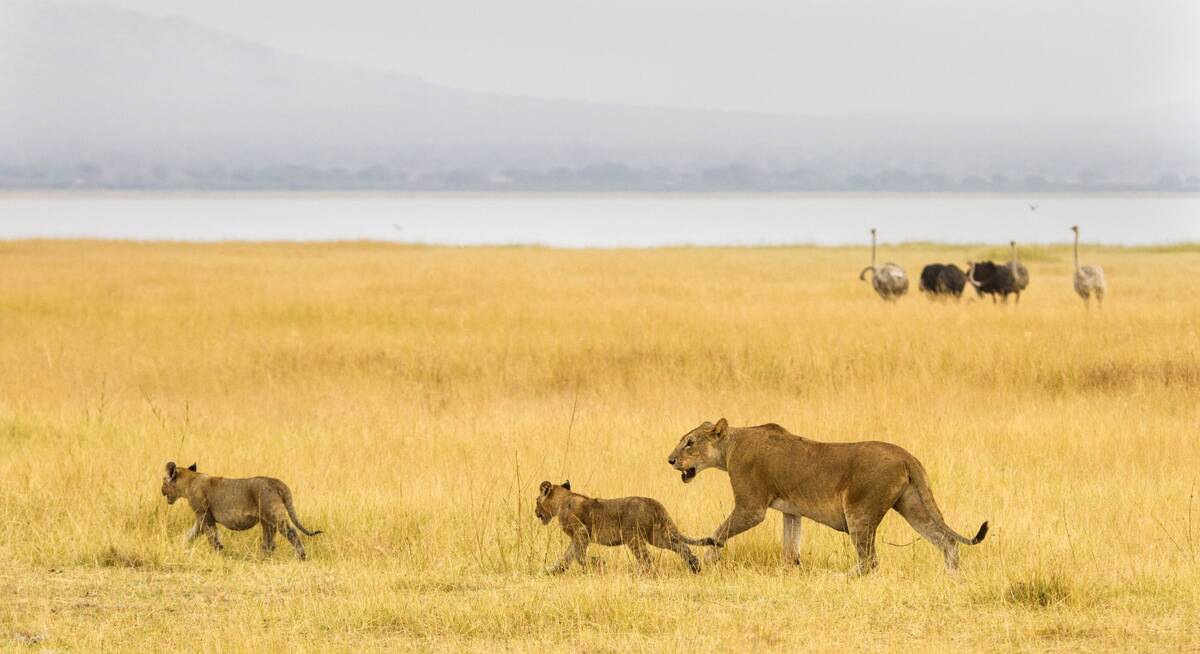
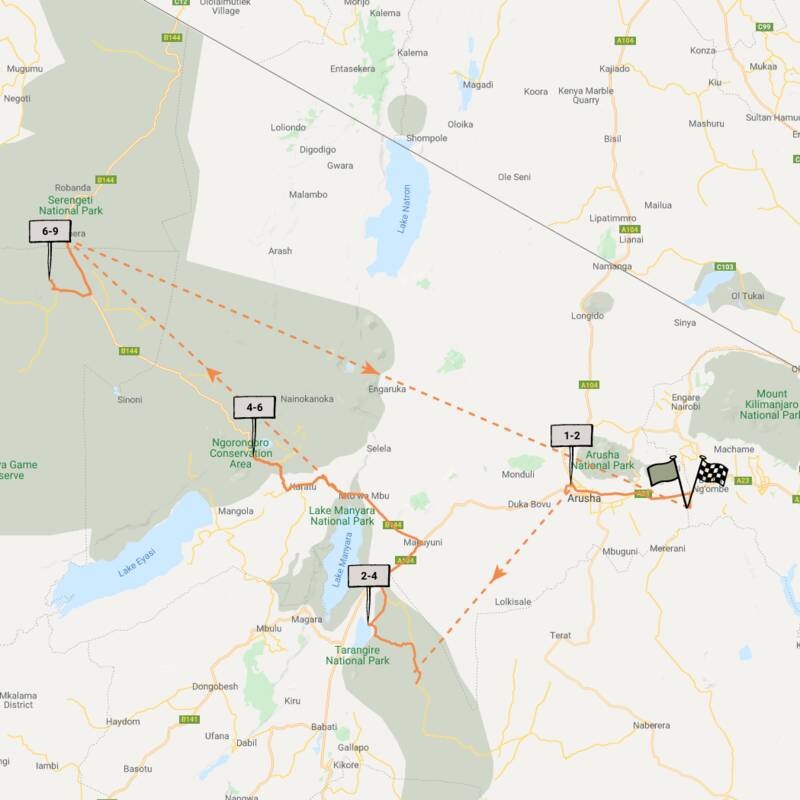
Secretary Bird Fly-in Safari
8 days • 4 locations • 1 country
KILIMANJARO AIRPORT TO KILIMANJARO AIRPORT
Chosen for comfort and relaxation as much as for its range of activities, this safari makes for a leisurely trip featuring stunning accommodation and swift access to many of northern Tanzania’s best wildlife regions.
Visiting Ngorongoro Crater, Serengeti and 2 other areas
US$14,030 - US$18,080 per person
Little Chem Chem: Our full report
Little Chem Chem is situated in the eastern part of the 200 km² Chem Chem Concession which has protected ...
... an important wildlife corridor adjoining Tanzania's Tarangire National Park. The area is dotted with baobab trees and overlooks Lake Burunge. Guests can experience a variety of safari activities here, including game drives, walking and night drives.
Little Chem Chem is the sister camp to the larger Chem Chem Lodge and both share the same high standards and first-class service. Little Chem Chem is an intimate eco-camp that espouses the concept of 'slow safari', offering a variety of activities in very luxurious and relaxing surroundings. The pace here is certainly unhurried. On our most visit we were once again highly impressed with the camp’s set-up, the slick service and great guiding.
Little Chem Chem has six luxury safari tents including one family tent and, although they are not that far apart, each is surrounded by attractive stone screening for privacy. The well-appointed tents have vintage furniture, elegant fittings and authentic décor in the same earthy colour scheme as the rest of the camp. Three of the rooms are equipped with king-size beds, two with twin beds and the family room consists of two adjoining bedrooms (separate by a canvas wall and curtain). Triple rooms can also be made up.
All tents have a small seating area, two fans, bedside tables and a study desk. There are many thoughtful touches, from the jar of homemade sweet treats, to the ‘gym in a bag’ with a yoga mat, jump rope and hand weights. At one end of the end you’ll find a dressing area, with a wardrobe, full length mirror and twin wash basins. This leads to the en-suite bathroom with a flush toilet and an indoor and outdoor shower. As at Chem Chem Lodge, Molton Brown toiletries and other high-quality bath products are provided.
The camp's main tent has a rustic, stylish décor. The seating area is furnished with sofas and armchairs in natural colours, decorated with candles, making it an ideal place to relax between adventurous activities. There are coffee table books, board games, an iPod and concealed charging points to keep guests occupied. There is also a small gift shop near the main area.
Little Chem Chem has a separate dining tent, surrounded by several paved areas where guests can enjoy private evening meals. Guests eat in a different location for each meal, and are kept rather separate from each other giving each couple or group quite an exclusive experience. Each tent is assigned a butler who is on hand throughout each meal. Service is exceptionally attentive and while some guests will love the constant attention to detail, others may find it a little too much. All the main areas are within view of the waterhole, which is lit at night, and is visited by animals in the evening.
Situated a few minutes walk away from the main area, a number of sunloungers, surround the welcoming pool, where there's always someone on hand to take any drink orders.
Activities at Little Chem Chem focus on game drives, night drives and walking safaris in the private concession. Off-road driving is allowed here, allowing greater flexibility, and we were impressed with the responsible attitude of our guide was in this respect. The camp is in a relatively newly established concession, and the quantity of wildlife is steadily increasing. We were really impressed with the amount we saw, including some fantastic elephant and lion sightings, which were as good as or better than our experiences inside the Tarangire National Park itself – which you can easily visit from the camp.
There is also the opportunity for sundowners at Lake Burunge, which is an experience not too be missed – the set-up here is most impressive. Little Chem Chem also offers hot-air ballooning as a more unusual way to watch game. This gives you the opportunity to see wildlife from a different point of view, though at a relatively high additional cost.
Geographics
- Location
- Tarangire National Park, Tanzania
- Ideal length of stay
- Two to three nights
- Directions
- Little Chem Chem is about 130km (about two hours' drive) from Arusha. It is located between the Tarangire and Lake Manyara national parks. It's about a 30-minute drive to Tarangire's main gate, a 90-minute drive to Lake Manyara's north gate and a 2-hour drive to Lake Manyara's south gate.
- Accessible by
- Fly-and-Transfer
Food & drink
- Usual board basis
- Full Board & Activities
- Food quality
- The food at Little Chem Chem was a particular highlight for us – it was all extremely good, with high-quality, well portioned dishes that were imaginative and beautifully presented – altogether not dissimilar to what you might expect at a top restaurant anywhere in the world.
Breakfast is usually eaten in the dining tent or delivered to your own room. There is a small buffet of cereals, cheese, breads, pastries and fruit, and a choice of à la carte hot items including eggs Benedict and crêpes.
Lunch is either a three-course set menu of light dishes or eaten out in the bush if you are out for the day. We very much enjoyed our salad of watermelon and apple to start, followed by chickpea and sweetcorn sliders with fries, and finishing with a banoffee cheesecake mousse.
Dinner is à la carte with a couple of options for each course. We chose the slow roasted carrots to start, potato gnocchi as main course, followed by fa divine cashew nut parfait. - Dining style
- Individual Tables
- Dining locations
- Indoor and Outdoor Dining
- Further dining info, including room service
- Room service is possible
- Drinks included
- Drinks are included. Guests are supplied with filtered water, and sparkling water is also readily available.
Children
- Attitude towards children
- The lodge welcomes children aged over eight. Younger children are only accepted when the whole camp is booked on an exclusive basis.
- Property’s age restrictions
- Minimum age is 8 years.Children under 16 years are not allowed on walking safaris among big game.
- Special activities & services
- There is no child-minding service available. However, the camp offers a specially created children's menu, meals and mealtimes are coordinated around the family. Children can help staff in the herb and vegetable garden, and can get involved in activities such as pizza making or nature walks around camp.
- Equipment
- There is no special equipment for children.
- Generally recommended for children
- Little Chem Chem is a luxurious, intimate camp with an adult feel so is far better suited to older children.
- Notes
- Little Chem Chem is in the middle of the bush and wild animals do stroll through the camp, so children need to be kept under supervision at all times.
Communications
- Power supply notes
- There is a backup generator so power is available 24 hours a day.
- Communications
- WiFi is available throughout the camp.
- TV & radio
- There is no television or radio.
- Water supply
- Borehole
- Water supply notes
- The camp’s water supply is pumped (with solar power) from a nearby well and there is a purifying station on site. The bathrooms are fully plumbed and there are flushing toilets.
Sustainability
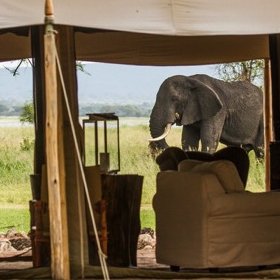
Protecting the big elephant tuskers in Tanzania
Little Chem Chem is part of the Chem Chem Foundation which manages one of the few remaining sanctuaries for big elephant tuskers in Africa. Guests are charged symbolic conservation and community fees which are reinvested in projects for conservation and protection of wildlife and community development.
.
Contributions have helped implement elephant IDs which monitor the movement of animals in the greater Tarangire area and collect data on the herds’ size, location and welfare. The information gathered is then sent to anti-poaching units who patrol the wildlife reserves in an attempt to prevent and stop criminal activity. Wildlife rangers are divided into on-shore and off-shore teams for better management.
Deterioration and loss of habit are two major obstacles that endanger the welfare of elephants. Conservation efforts by Chem Chem include negotiating concession leases with the local communities and the government of Tanzania to gain access to 20 000 hectares in the Tarangire National Park. The new Wildlife Management Area (WMA) is well looked-after and kept unfenced to provide additional space for the animals to roam the valleys and transform them into their new home. Much to guests’ entertainment, photography tours are organised to catch glimpses of wildlife in their natural habitat.
See more great sustainability projects in Tanzania
Health & safety
- Malarial protection recommended
- Yes
- Medical care
- All managers are first-aid trained and there is a first-aid kit on site. The nearest doctor is two hours away in Karatu.
- Dangerous animals
- High Risk
- Security measures
- The camp is guarded by askaris 24 hours a day and the concession is patrolled by armed anti-poaching teams.
- Fire safety
- All staff are trained in fire safety and there are extinguishers throughout camp.
Activities
4WD Safari
Birdwatching
Cultural excursion
Guided walking safari
Hot air ballooning
Night drive
Private activities
Extras
- Disabled access
- Not Possible
- Laundry facilities
- Laundry is included, hand-washed and line dried (including underwear).
- Money
- There is a safe in each room.
- Accepted payment on location
- The camp accepts Visa and MasterCard without charge. US dollars, British pounds, euros and Tanzanian shillings are also accepted in cash.
Plan and book your trip with Expert Africa
All of our trips are tailor-made, so we'll always adapt them to suit you. Talk to an Expert and let us plan and arrange your perfect trip.

Talk to an Expert
Call or email us now! We’ll match you with the Specialist in our team who is best suited to help you. Then together we can start planning your trip.

Set up your itinerary
Based on our experience and your ideas, your specialist will create a detailed, costed itinerary. We’ll refine it together, until we have a trip that you’re perfectly happy with.

Prepare for your trip
The same Specialist will make the seamless arrangements for your trip, send you detailed travel documents, and be available to answer any questions before you depart.

Travel with peace of mind
After you set off, you’ll be cared for by our partners in Africa, most of whom have worked with Expert Africa for decades. And if you ever need us urgently, we’re available 24/7.

When you return
We love to learn about your trip, and so will always be grateful if you’ve the time to give feedback to your Specialist when you return.
Little Chem Chem's location
Look closer at the environment and surroundings of Little Chem Chem.
Excursions from Little Chem Chem
Optional extra day-trips and excursions possible whilst you're staying at Little Chem Chem. Talk to us: these are usually best arranged before you go.
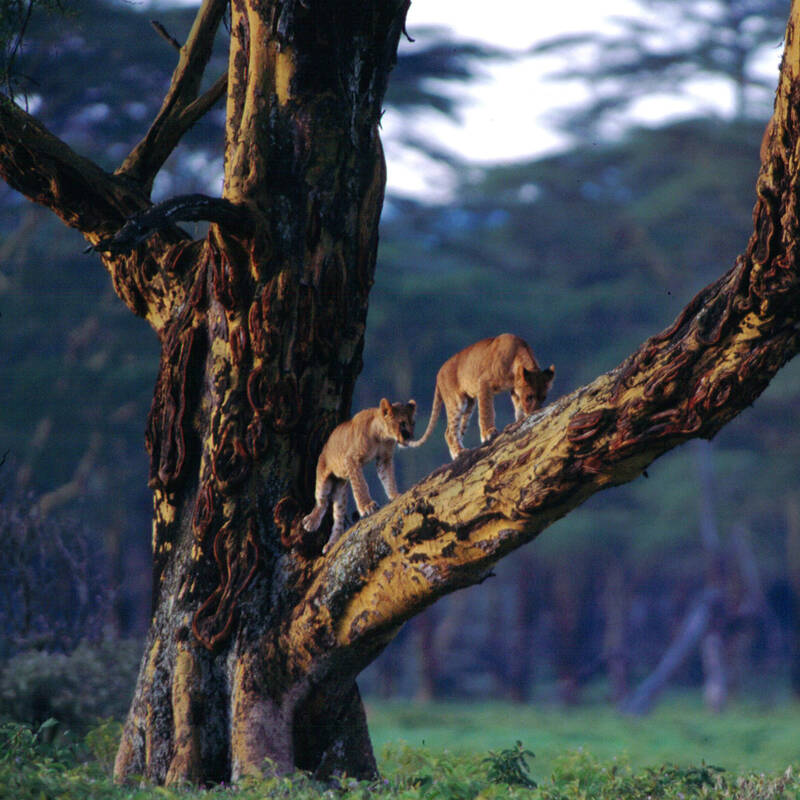
Lake Manyara Safari
Half-day or full-day
Set against the spectacular backdrop of the Rift Valley escarpment, Lake Manyara National Park makes a great safari destination. Here, along with elephant herds and plains game, you’ll find jungle-like forests that are home to blue monkeys, a soda lake tinged pink by flamingos and some of Tanzania’s best birding.
More about Lake Manyara Safari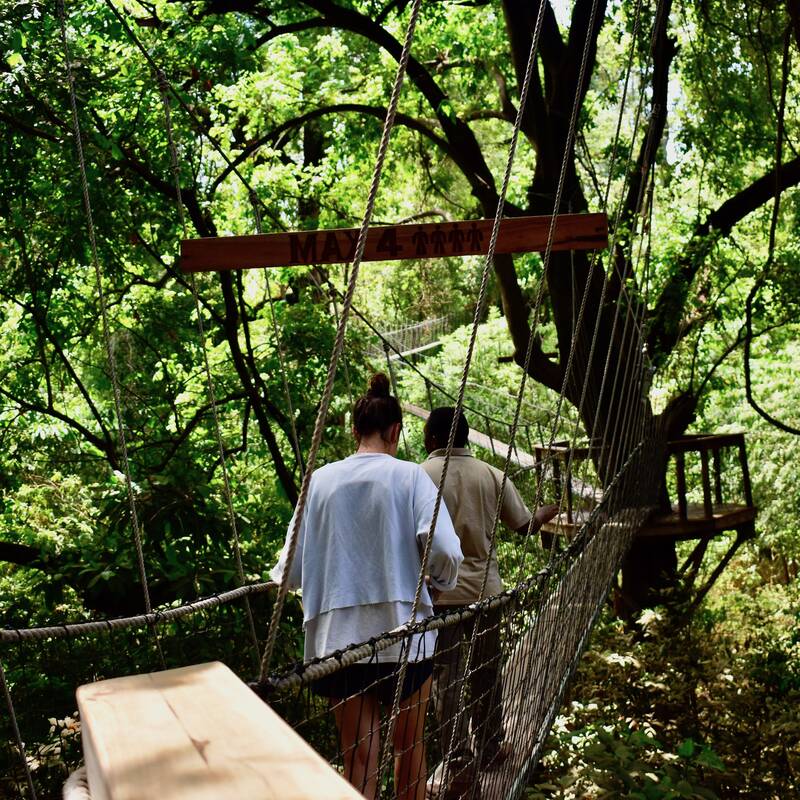
Lake Manyara Treetop Walkway
Usually one hour
Experience the forest of Lake Manyara National Park from a whole new perspective – high up in the trees. The first suspended walkway in Tanzania, it stretches underneath the canopy for 370m between the mahogany and fig trees, giving intrepid visitors a unique view of the surrounding flora and fauna.
More about Manyara Treetop WalkOther lodges in Tarangire National Park
Alternative places to stay in this same area.
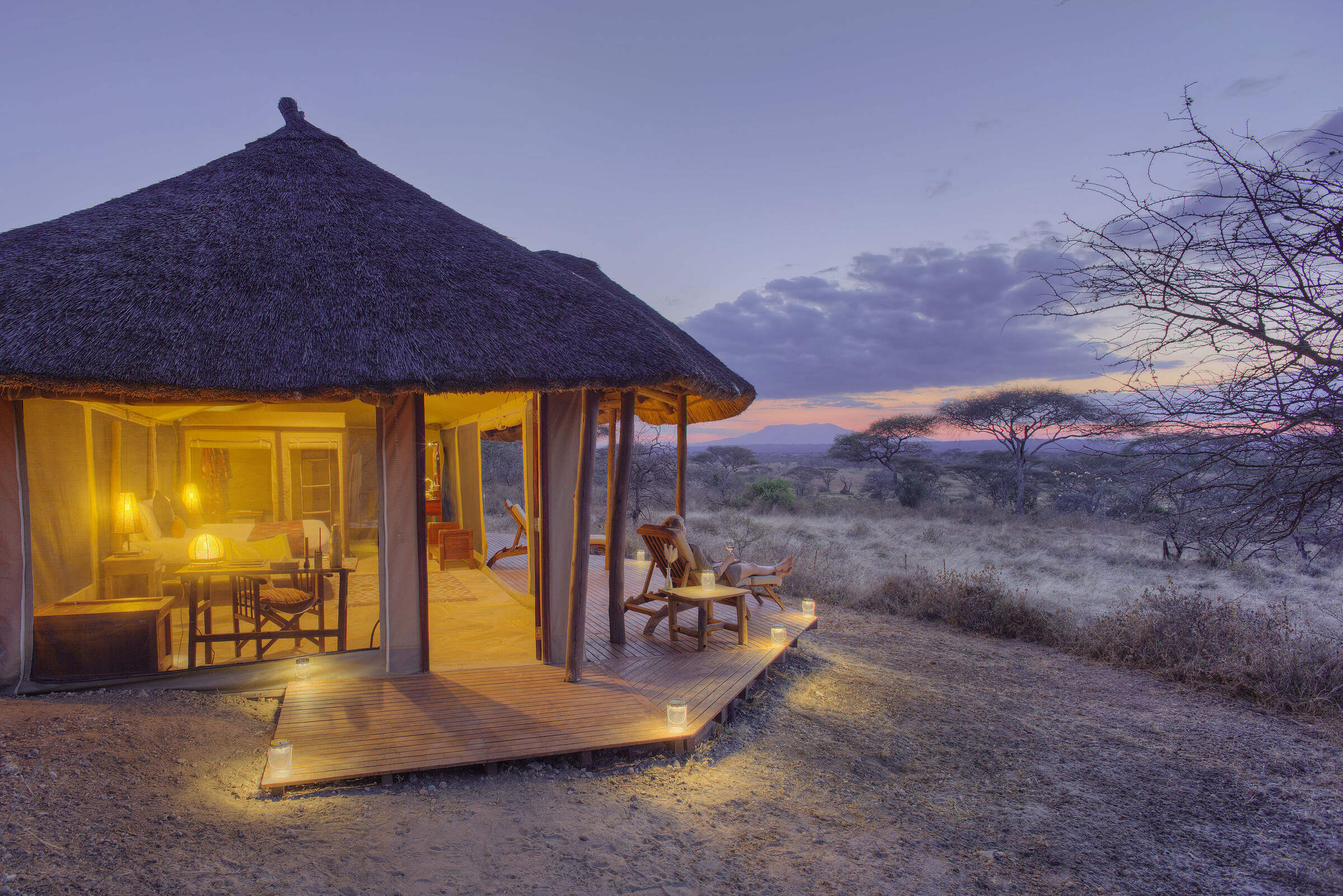
Oliver's Camp
Oliver's Camp is a small, intimate, luxury tented camp in a great location in northern Tanzania's Tarangire National Park.
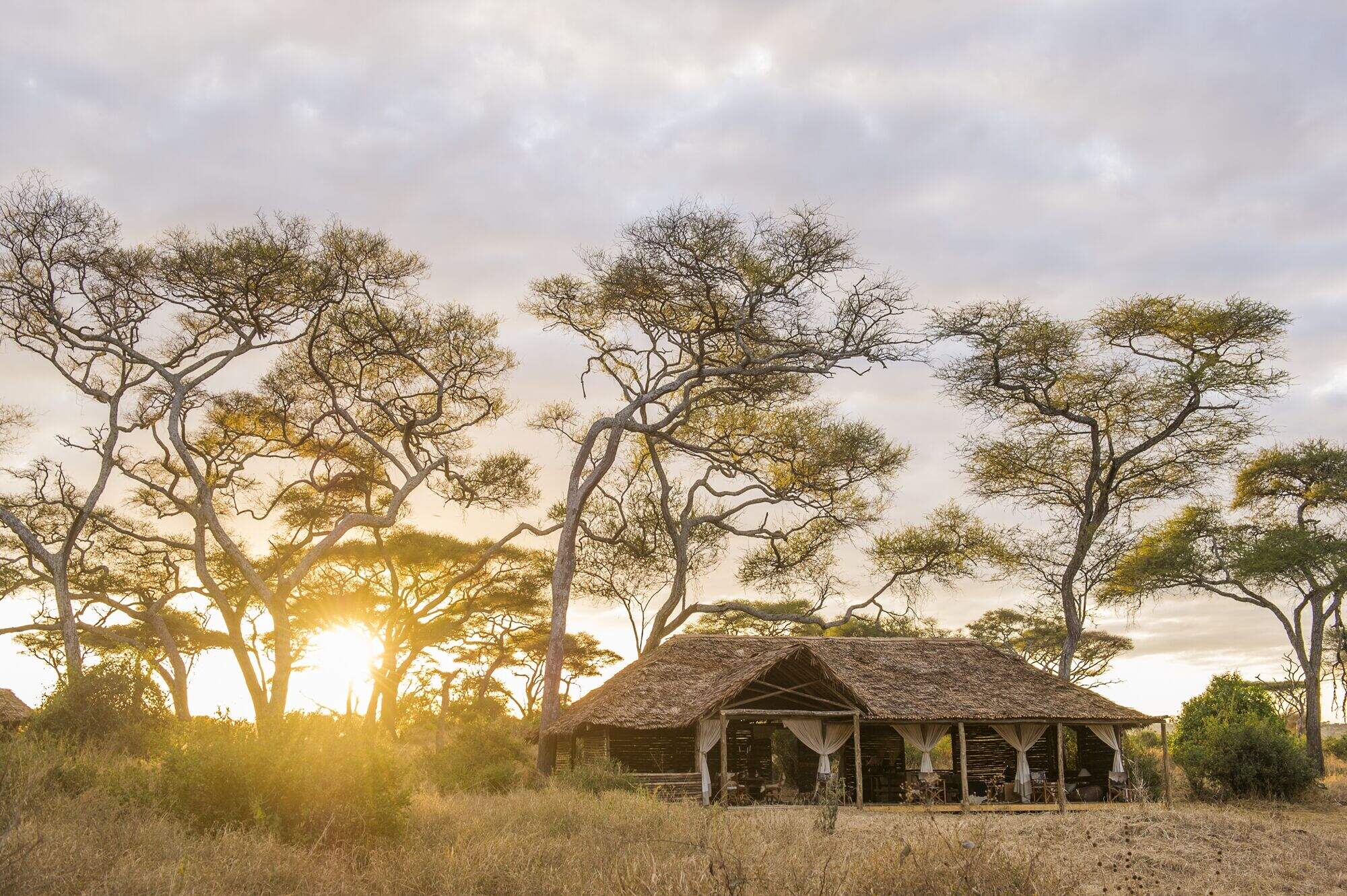
Kuro Tarangire
Kuro Tarangire is a stylish tented camp, located in a quiet and remote area deep in Tarangire National Park.
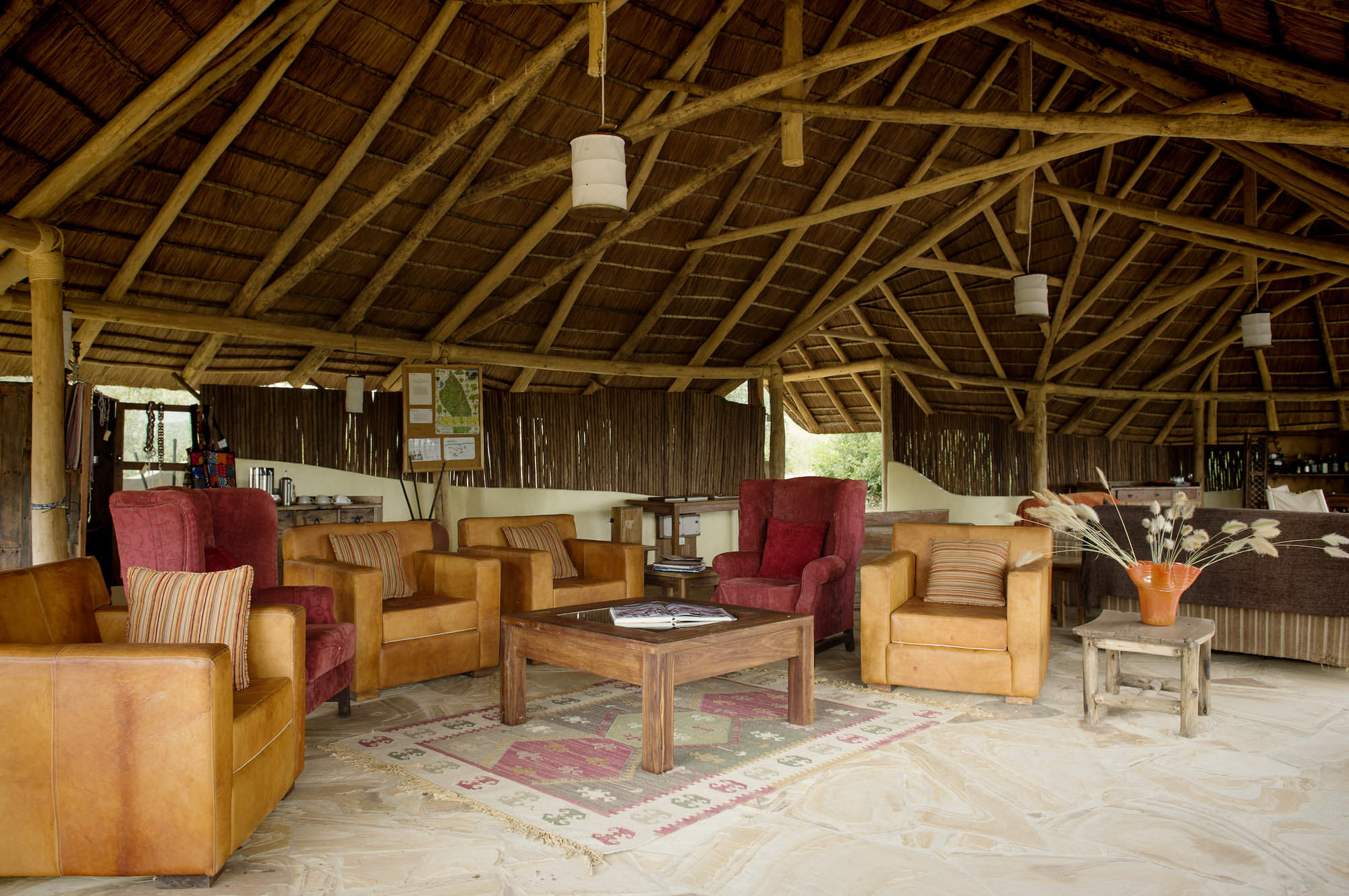
Little Oliver's
For a more private version of its sister property, Oliver’s Camp, Little Oliver’s offers high-quality guiding and tented rooms.
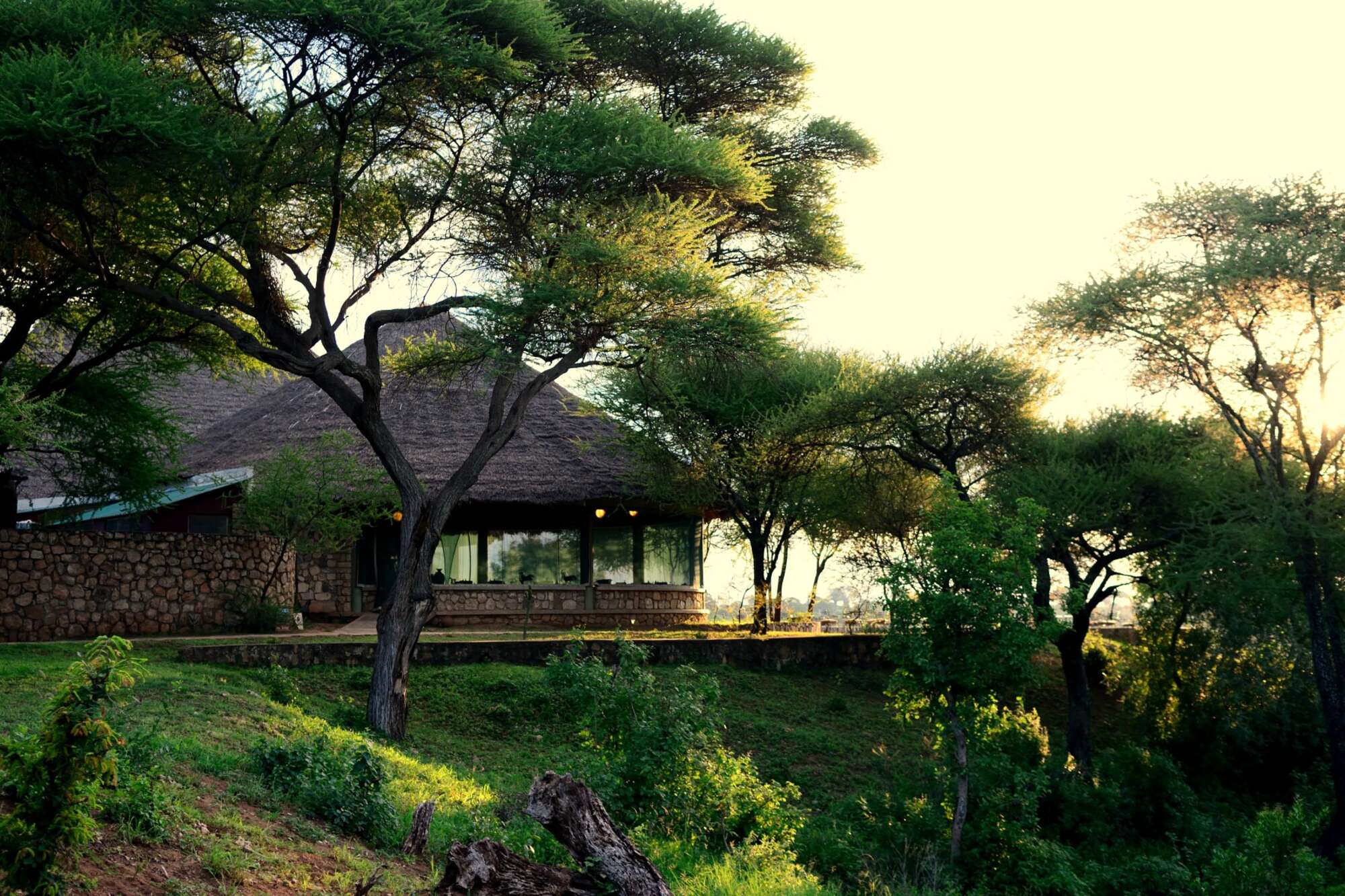
Tarangire Safari
Functional Tarangire Safari Lodge is one of Tarangire National Park's larger lodges, on a prime central site overlooking the river.
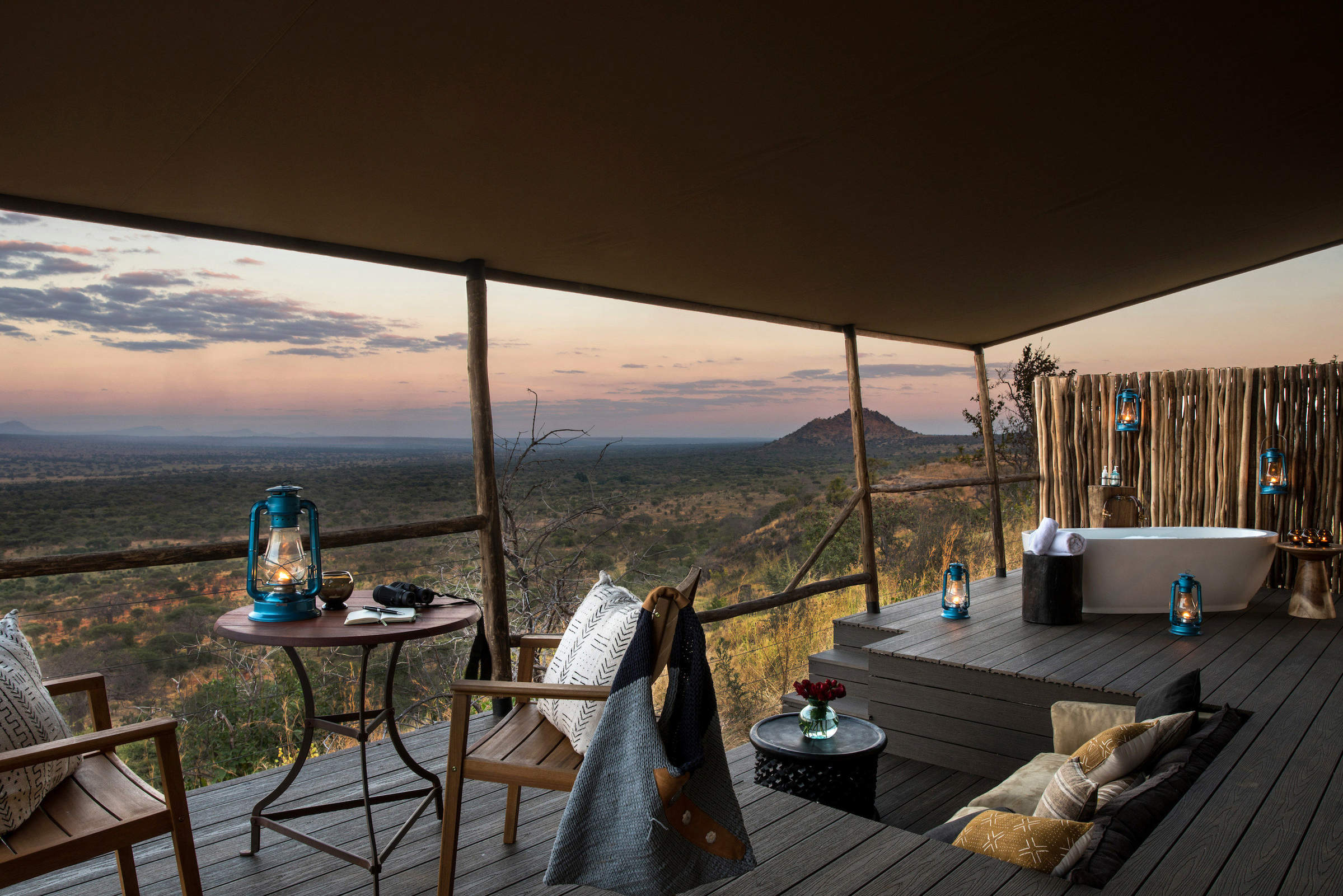
Lemala Mpingo Ridge
Lemala Mpingo Ridge is a stylish camp in Tarangire National Park, with a beautiful location and elevated views over the park.
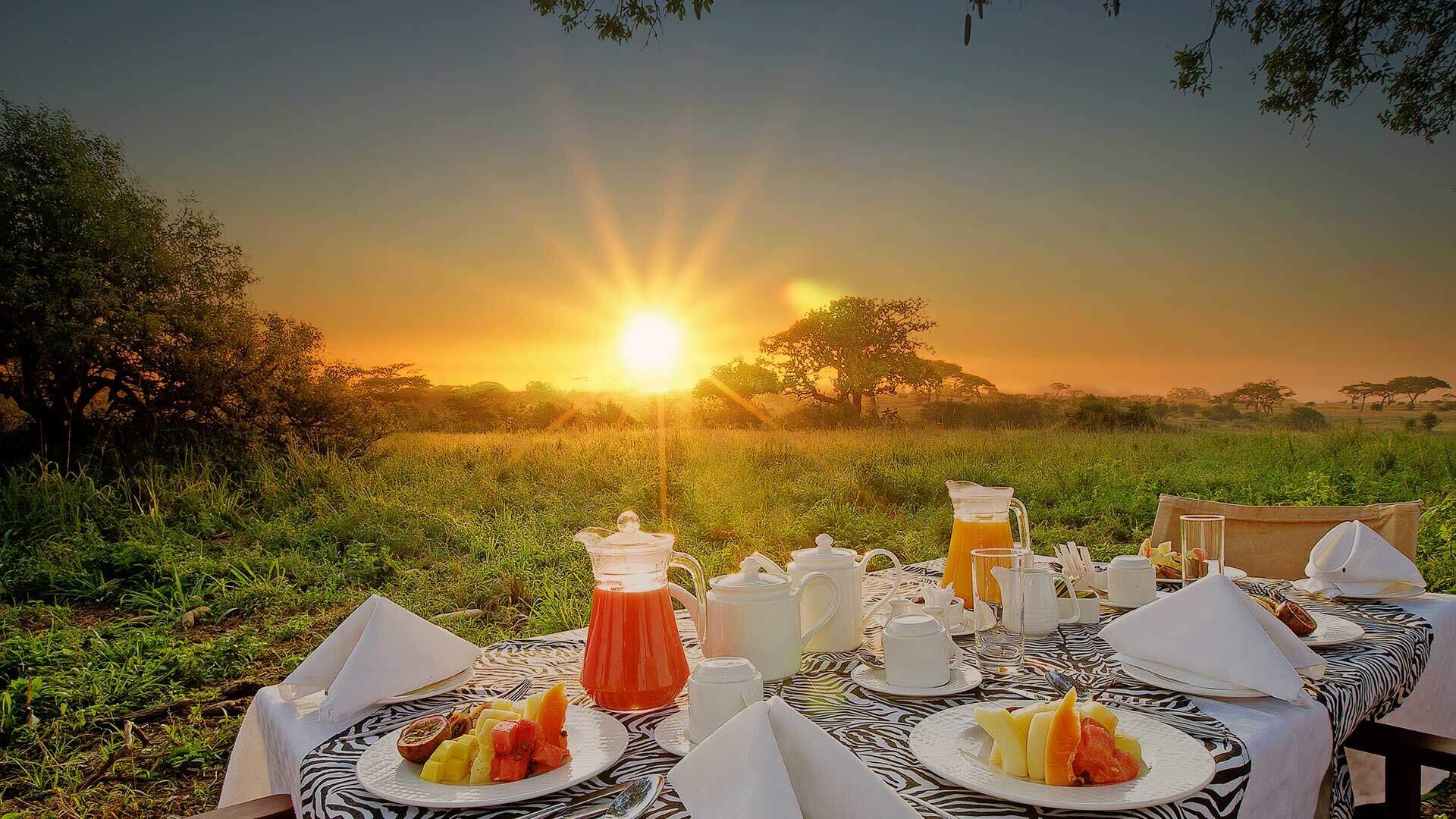
Tarangire Sopa Lodge
Tarangire Sopa Lodge is a large, comfortable, family-friendly hotel in Tarangire National Park, suitable for travellers on a budget.
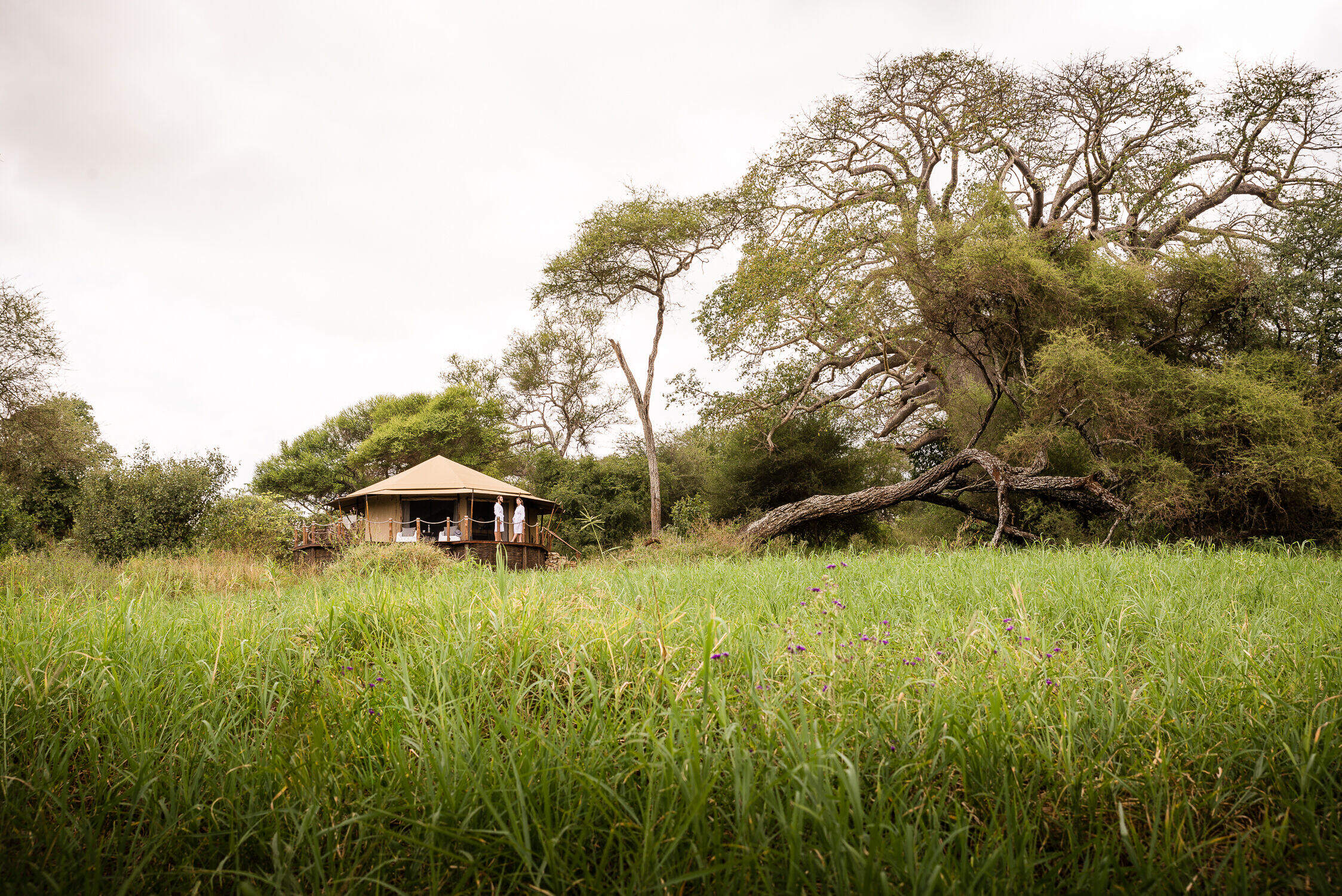
Swala Camp
Swala Camp is a stylish camp for exploring the southern Tarangire, either with a private driver-guide, or using the camp's vehicles and guides.

Tarangire Treetops
Tarangire Treetops is a lovely, high-quality lodge on the outskirts of Tarangire National Park, offering game drives, night drives and safari walks.
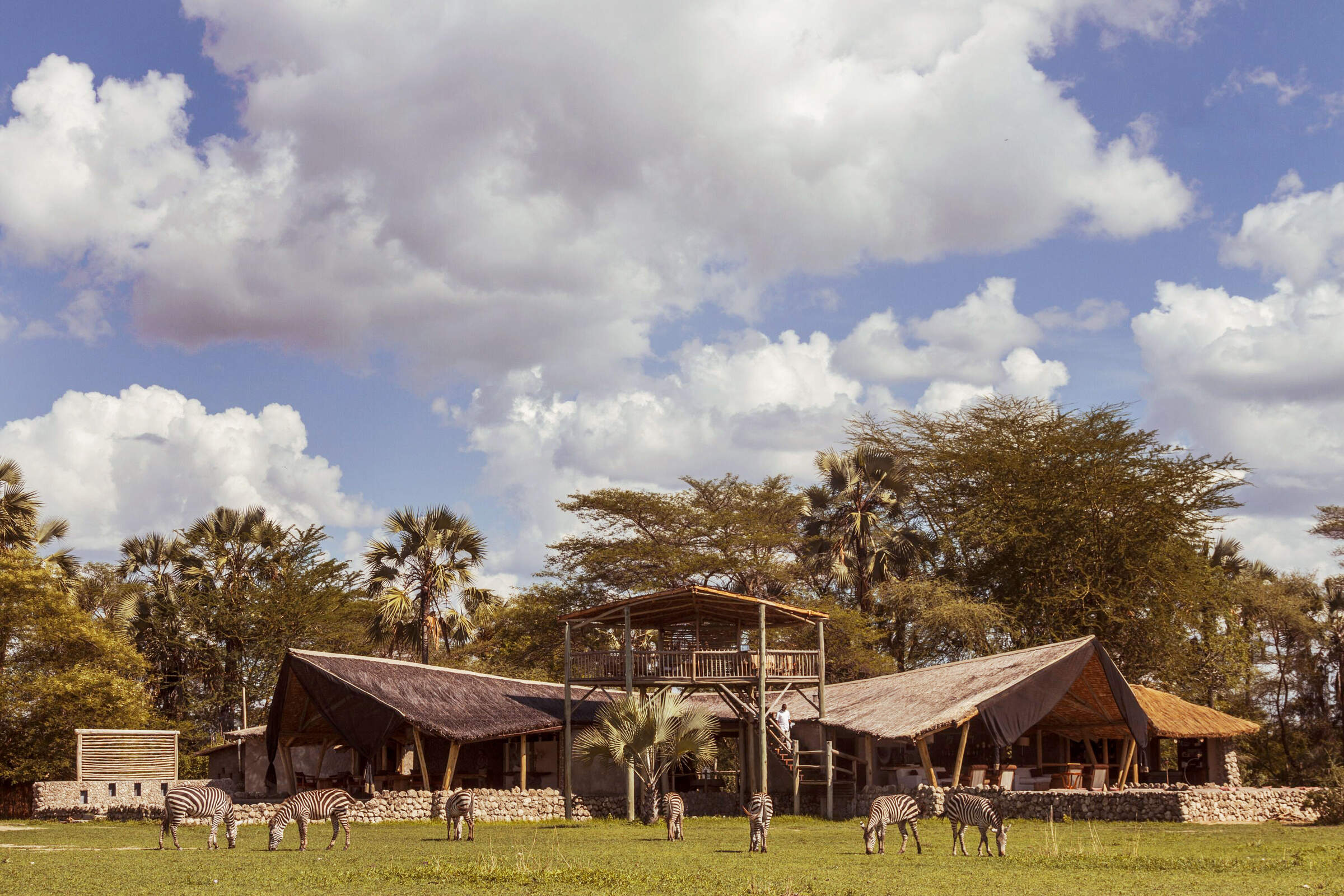
Chem Chem
Chem Chem is a luxury tented lodge on a private concession between Lake Manyara and Tarangire national parks.
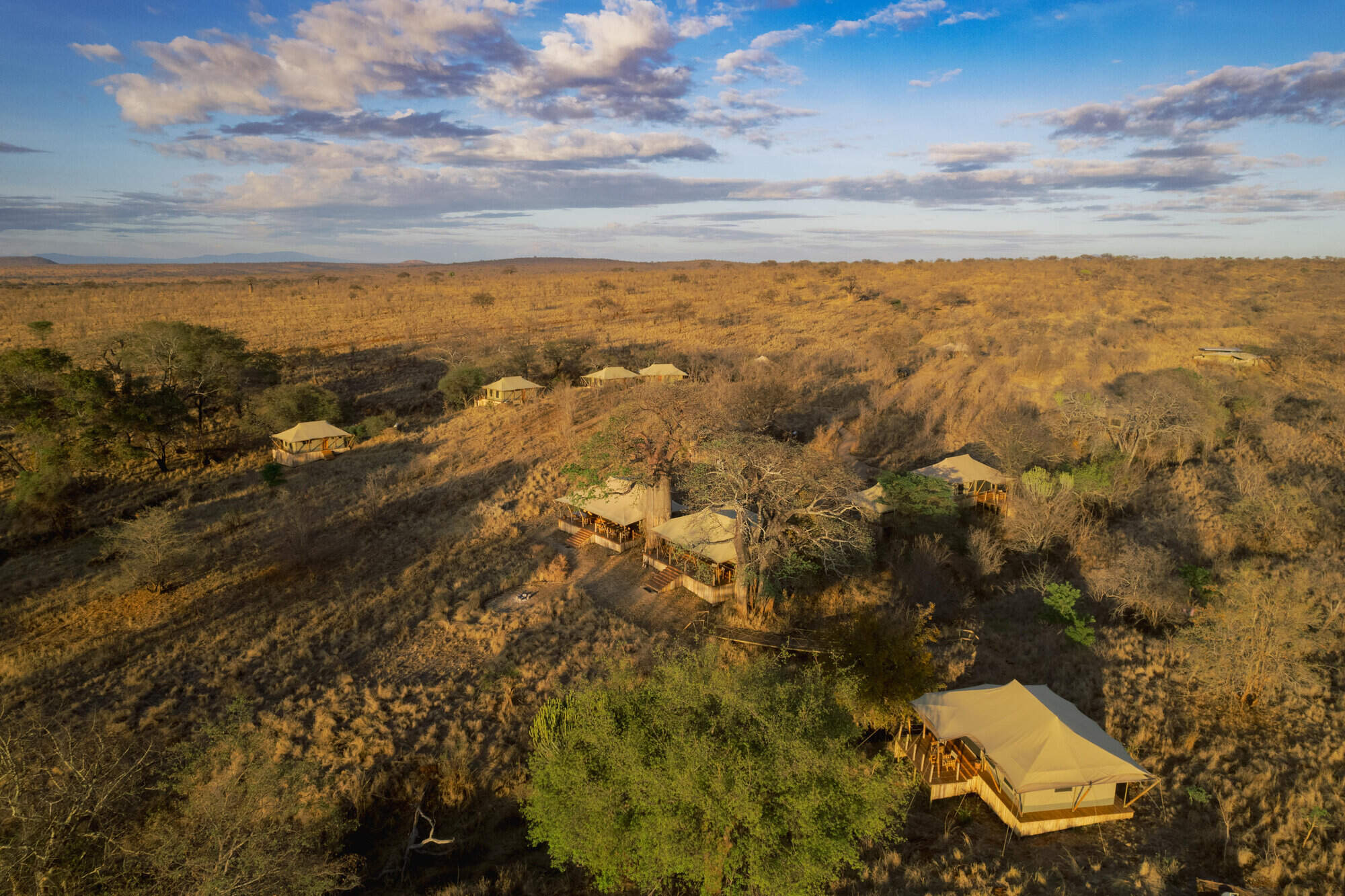
Olkeri Camp
Olkeri is a comfortable tented camp, located in the Randilen Wildlife Management area, bordering Tarangire National Park; ideal for those looking for pristine wilderness.
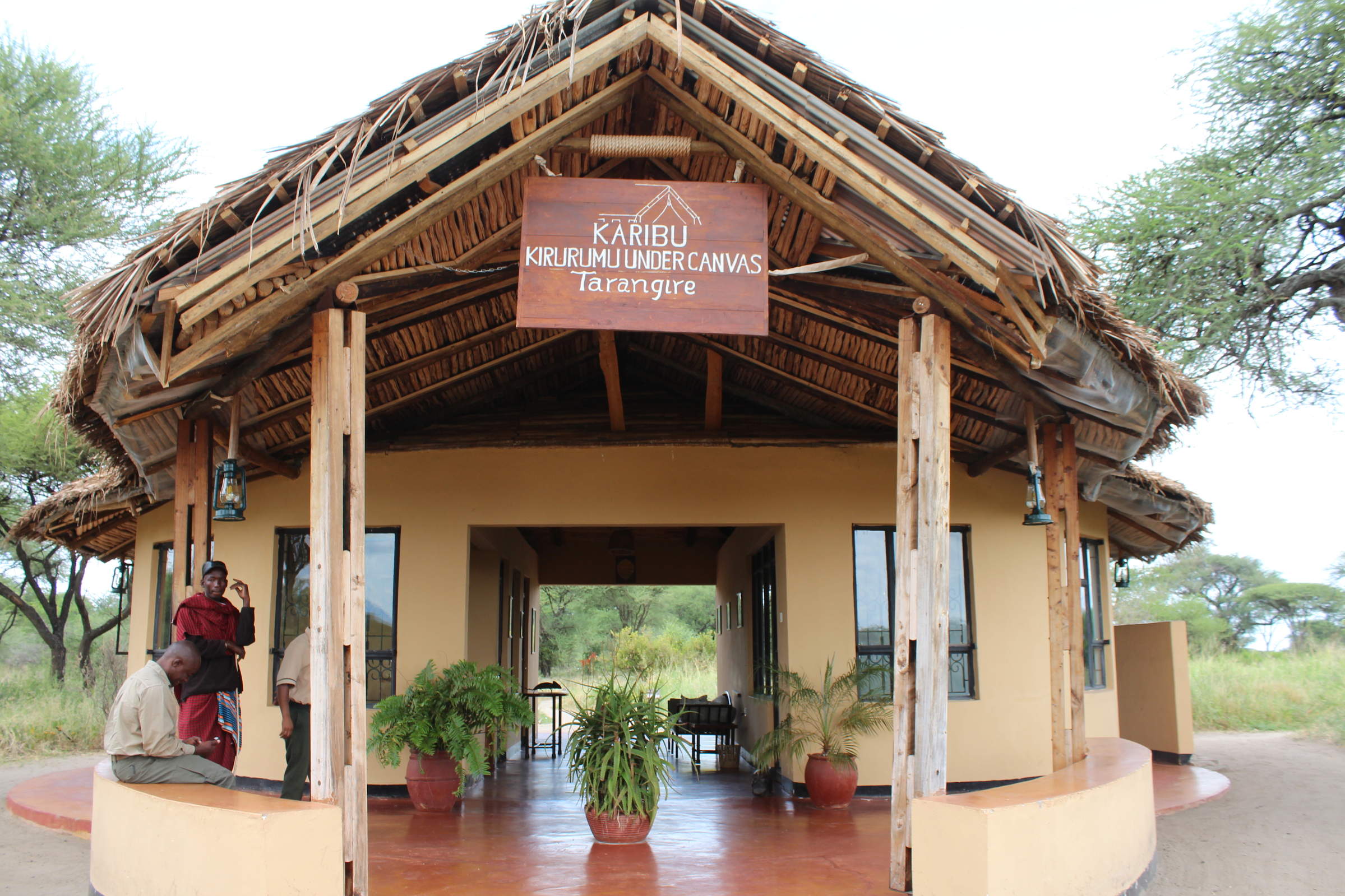
Kirurumu Tarangire
Kirurumu Tarangire Lodge is a simple, small, tented camp positioned just outside the northern boundary of Tarangire National Park.
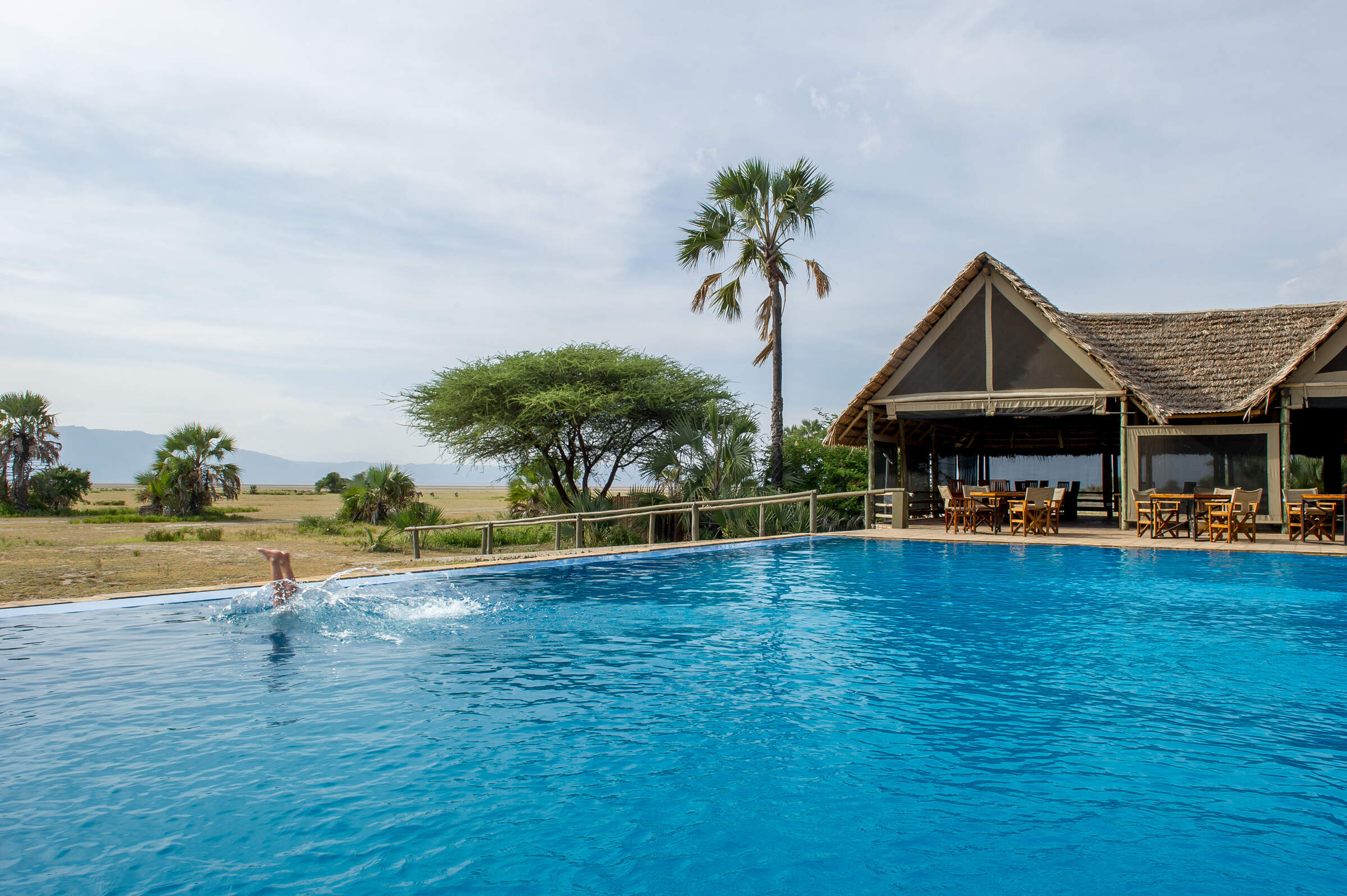
Maramboi Tented Camp
Maramboi Tented Camp is a family-friendly tented lodge located between Lake Manyara and Tarangire National Park.
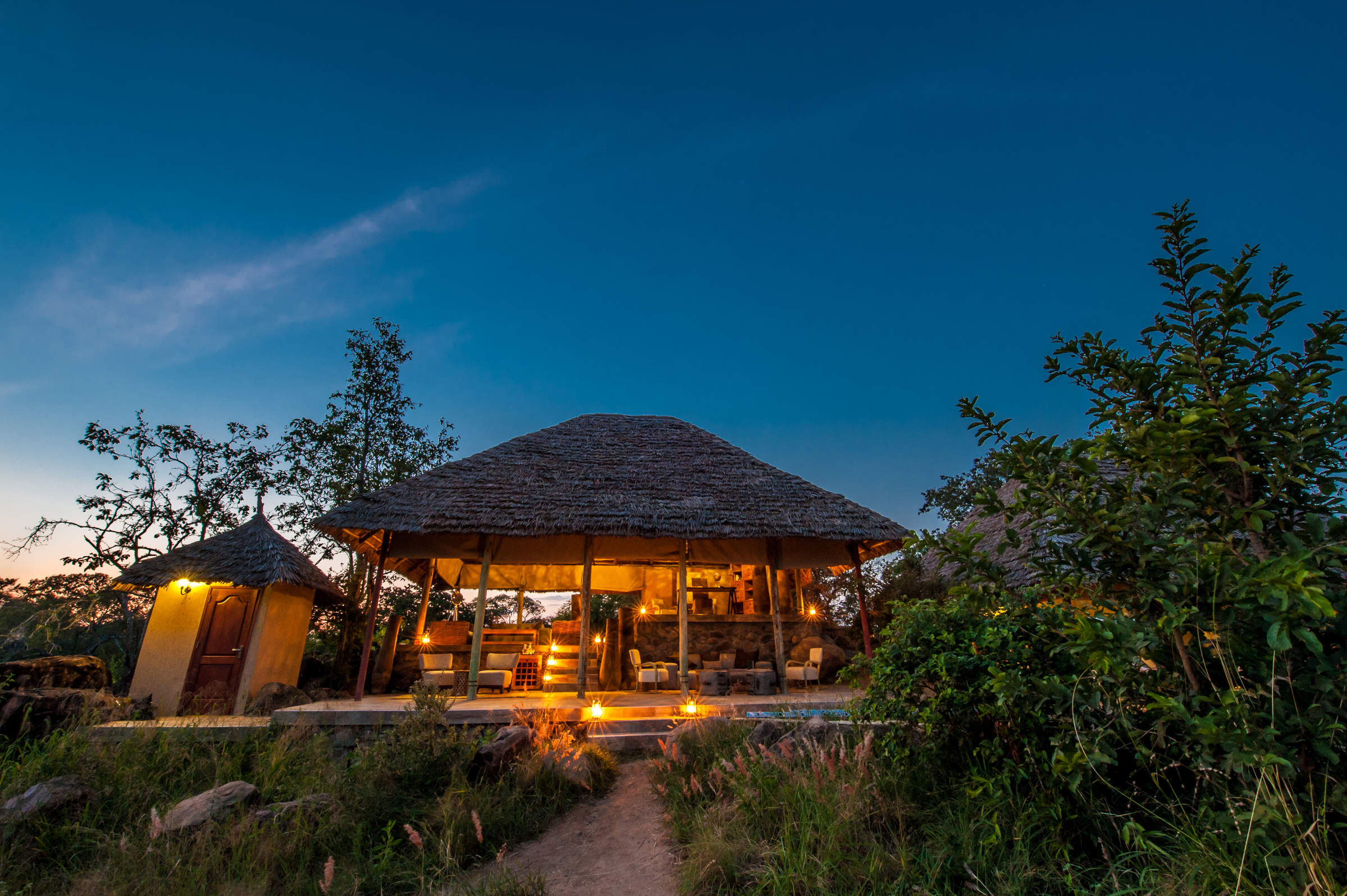
Nimali Tarangire
Nimali is a small camp built in contemporary style on the outskirts of Tarangire National Park in northern Tanzania.
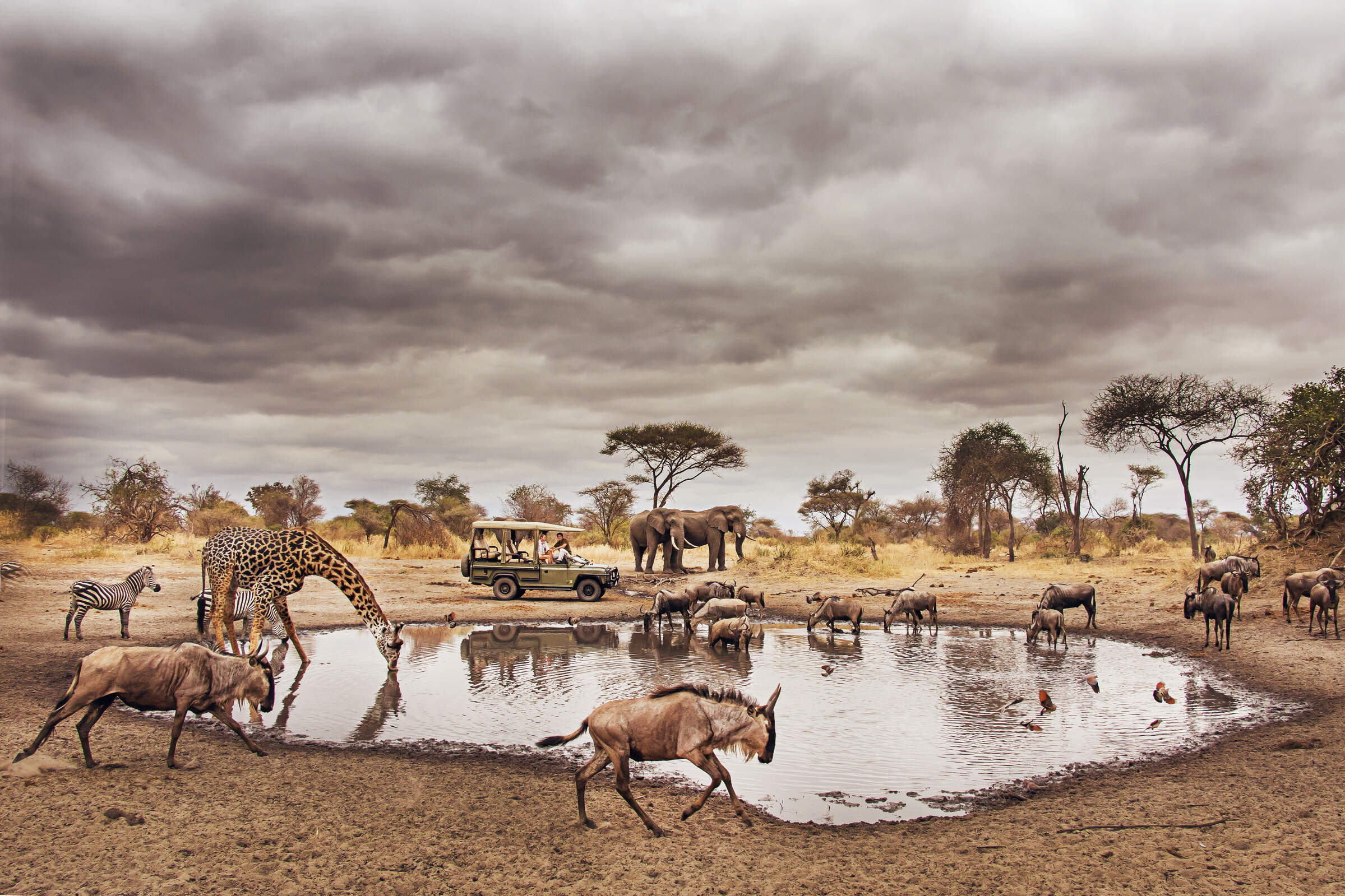
Forest Chem Chem
Located in the Chem Chem Concession and close to Tarangire National Park, Forest Chem Chem is a high-quality tented camp which is booked on an exclusive basis.
When to go to Tarangire National Park
Our month by month guide: What it's like to visit Little Chem Chem in Tarangire National Park
Jan
Feb
Mar
Apr
May
Jun
Jul
Aug
Sep
Oct
Nov
Dec
Tarangire National Park in January
January marks the start of the short dry season. The Tarangire River becomes a crucial water source, attracting diverse wildlife. Elephants, buffaloes, and zebras congregate around the river and swamps. The iconic baobab trees stand out against the landscape, providing food and shelter for animals. Birdwatching is excellent as resident birds display breeding plumage and migrant species are present.
The Silale and Gurusi swamps teem with hippos and crocodiles. While the southern areas of the park may still be wet, the northern regions offer great game viewing. The Matete Woodlands provide opportunities to spot leopards and rare fringe-eared oryx antelopes. January can offer great value for visitors, with quieter park conditions and variable weather.
- Variable weather, dry or rainy periods
- Good for birding, many migrant species present
- Elephant herds gather near Tarangire River
- Lush landscapes ideal for photography
- Quieter after early January rush
Our view
A good time to visit, with pros & cons
Weather in January
Tarangire National Park in February
February in Tarangire National Park is one of the hottest months, with temperatures reaching around 33°C/91°F. The short dry season continues, making it an excellent time for wildlife viewing. The Tarangire River and surrounding swamps become focal points for animal activity. Large herds of elephants, numbering over 3,000, are a major attraction.
The north offers impressive vegetation and birdlife, including large flocks of red-billed quelea birds and various raptors. Birdwatchers will enjoy the park's 550+ species, with northern hemisphere migrants joining resident birds. February is lovely for ballooning, offering unique aerial views of the park's diverse landscapes and wildlife during the cooler morning hours.
- Hot and dry weather prevails
- Large elephant herds visible near water sources
- Excellent time for game drives and safaris
- Baobab trees stand out in dry landscape
- Park less crowded, better wildlife viewing
Our view
A very good time to visit
Weather in February
Tarangire National Park in March
As March arrives in Tarangire, the long rains begin, transforming the landscape. This is an important time for the park's famous baobab trees, which store water in their trunks. While game viewing becomes more challenging due to dispersing wildlife, it's an excellent time for photography as the scenery turns lush and green.
The Tarangire ecosystem, including granitic ridges and river valleys, offers stunning views of the Great Rift Valley. Birdwatching remains rewarding, especially in the swampy floodplains and woodlands. March remains challenging for guided walking safaris, as the vegetation is high and thick.
- Hot with increasing humidity before rains
- Wildlife viewing varies as rains approach
- Quiet park with lower visitor numbers
- Migratory birds still present in good numbers
- Balloon safaris offer stunning aerial views
Our view
A good time to visit, with pros & cons
Weather in March
Tarangire National Park in April
April is the wettest month in Tarangire, with an average of 250mm of rain. The park's landscape is at its lushest, with flowering plants attracting insects and smaller animals. While big game viewing is more challenging due to dense vegetation, it's an excellent time for photographers to capture the vibrant scenery. The Tarangire River and swamps swell, creating picturesque scenes.
Birdwatching remains exceptional, with over 550 species present in the park. Visitor numbers are low, providing a more intimate safari experience.
- Heavy rains with impressive thunderstorms
- Some camps closed due to weather conditions
- Lowest rates and very few other tourists
- Lush green landscape, but wildlife dispersed
- Birdwatching excellent for resident species
Our view
This is not a great time to visit
Weather in April
Tarangire National Park in May
As May progresses in Tarangire, the long rains begin to taper off. The park's diverse habitats, from woodlands to savannahs, are lush and green. While wildlife viewing can still be challenging due to high grass, patient observers may spot leopards in the Matete Woodlands. The swamps, including Silale and Gurusi, are full of water, attracting numerous bird species.
May is an excellent time for photography, with dramatic skies and verdant landscapes. The Tarangire ecosystem is at its most vibrant, showcasing the park's stunning biodiversity. Visitor numbers remain low, offering peaceful game drives. Cultural visits to nearby Maasai communities provide insights into local traditions and lifestyles.
- Rains continue, creating dramatic skies
- Quiet time to visit, avoiding crowds
- Park lush and green with high grass
- Wildlife more dispersed, fewer sightings
- Affordable rates for budget-conscious visitors
Our view
This is not a great time to visit
Weather in May
Tarangire National Park in June
June marks the beginning of the dry season in Tarangire. As the landscape starts to dry, wildlife begins to congregate around permanent water sources. The famous Tarangire River becomes a hub of animal activity, attracting diverse species. Elephant herds become more visible as they move towards reliable water supplies.
June is an excellent time for birdwatching, with over 550 species present in the park. The Lemiyon Triangle in the north offers impressive vegetation and birdlife. As the grass starts to shorten, game viewing improves, especially along the Birungi Circuit. June is lovely for balloon safaris, providing breathtaking views of the awakening landscape and wildlife below.
- Weather transitions from wet to dry
- Wildlife starts concentrating near water
- Park still green with some high grasses
- Visitor numbers increasing gradually
- Good value with shoulder season prices
Our view
A good time to visit, with pros & cons
Weather in June
Tarangire National Park in July
July is a prime month for wildlife viewing in Tarangire. As the dry season progresses, large herds of elephants, buffaloes and zebras gather around the Tarangire River and swamps. The park's famous baobab trees stand out against the increasingly arid landscape. Game drives along the Birungi Circuit offer excellent opportunities to spot lesser kudu and massive elands.
Birdwatching remains rewarding, especially around the park's swamps and woodlands. The Matete Woodlands provide good chances to see leopards and rare fringe-eared oryx antelopes. July is perfect for photography, with clear skies and animals congregating at water sources. Guided nature walks provide intimate encounters with the park's flora and fauna. Sundowner game drives offer magical experiences as the African sun sets over the savannah.
- Dry season begins, excellent wildlife viewing
- Large elephant herds visible near river
- Popular time with higher visitor numbers
- Peak prices due to optimal conditions
- Guided walks offer intimate wildlife experiences
Our view
Fantastic: the very best time to visit
Weather in July
Tarangire National Park in August
August in Tarangire offers exceptional wildlife viewing opportunities. The dry season is in full swing, concentrating animals around the Tarangire River and remaining water sources. Large elephant herds, sometimes numbering in the hundreds, are a common sight. The park's swamps, including Silale and Gurusi, attract diverse wildlife.
Birdwatching is excellent, with many species gathering around water bodies. The iconic baobab trees provide a striking backdrop for photography. August is ideal for balloon safaris, offering panoramic views of the park's diverse landscapes and wildlife. Guided nature walks provide intimate encounters with the park's flora and fauna. Cultural visits to nearby Maasai communities offer insights into traditional lifestyles.
- Dry conditions, animals gather at water sources
- Excellent general wildlife viewing
- Busy season with higher visitor numbers
- Swamps attract diverse wildlife species
- Night drives reveal nocturnal animals
Our view
Fantastic: the very best time to visit
Weather in August
Tarangire National Park in September
September is an excellent month to visit Tarangire. As the dry season peaks, wildlife concentrates around remaining water sources, particularly the Tarangire River. Large herds of elephants, wildebeests, and zebras offer spectacular viewing opportunities. The Matete Woodlands and Birungi Circuit provide chances to spot predators like leopards. Birdwatching remains rewarding, with over 550 species in the park.
The landscape, dotted with iconic baobab trees, offers stunning photographic opportunities. September is ideal for guided walking safaris, allowing visitors to explore the park's ecosystem up close. Balloon safaris provide breathtaking aerial views of the parched landscape and congregating wildlife.
- Fantastic wildlife viewing opportunities
- Parks becoming very dry, animals congregate
- Slightly quieter than peak August period
- Baobab trees in full leaf, great for photos
- Higher chances of seeing large predators
Our view
Fantastic: the very best time to visit
Weather in September
Tarangire National Park in October
October in Tarangire marks the end of the dry season, offering some of the best wildlife viewing opportunities. The Tarangire River and surrounding swamps become crucial for survival, attracting large concentrations of animals. Elephant herds are particularly impressive during this time. The park's famous baobab trees stand out against the parched landscape. Birdwatching is excellent, with many species congregating around remaining water sources.
October is ideal for photography, with clear skies and abundant wildlife. Balloon safaris provide stunning aerial views of the park's varied landscapes and wildlife. As the month progresses, there's a chance of early rains, bringing new life to the park.
- Mostly dry with comfortable temperatures
- Excellent game viewing around water sources
- Lower visitor numbers than earlier months
- Balloon safaris offer breathtaking views
Our view
A very good time to visit
Weather in October
Tarangire National Park in November
November in Tarangire sees the start of the short rains, transforming the landscape. The famous baobab trees begin to flower, creating a lush backdrop. Wildlife starts to disperse as water becomes more widely available, but game viewing remains good. The Tarangire River and swamps continue to attract diverse species. November is excellent for birdwatching as migratory birds arrive, joining the park's 550+ resident species.
As the vegetation greens, photography opportunities abound. Guided nature walks provide insights into the park's changing ecosystem. Cultural visits to nearby Maasai communities offer unique experiences. November can offer great value with shoulder season rates and fewer visitors.
- Variable weather, chance of rain increasing
- Parks quieter, prices more affordable
- Wildlife disperses as rains begin
- Migratory birds start arriving in the park
- Green season begins, landscape transforms
Our view
A good time to visit, with pros & cons
Weather in November
Tarangire National Park in December
December in Tarangire brings a mix of wet and dry conditions. The short rains continue, rejuvenating the landscape. The famous baobab trees are in full leaf, providing shade and food for wildlife. While animals are more dispersed than in the dry season, game viewing remains rewarding. The Tarangire River and swamps continue to attract diverse species.
December is excellent for birdwatching, with migratory birds present alongside resident species. Balloon safaris provide stunning views of the greening landscape. Cultural visits to nearby communities offer insights into local holiday traditions. Despite being a popular time for visitors, especially during the festive season, December can still offer peaceful safari experiences in less-visited areas of the park.
- Variable weather, mix of dry and rainy days
- Good game viewing in Tarangire River area
- Quiet early month, busy during holidays
- Prices vary from low to peak holiday rates
- Lush landscapes after early rains
Our view
A good time to visit, with pros & cons
Weather in December

Looking for inspiration on where to travel next?
Visit our trip chooser to explore your options and find inspiration for your perfect African adventure
Inspire me